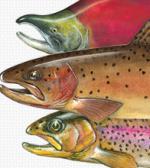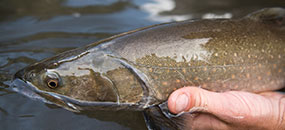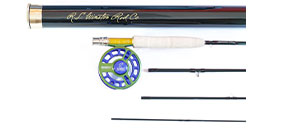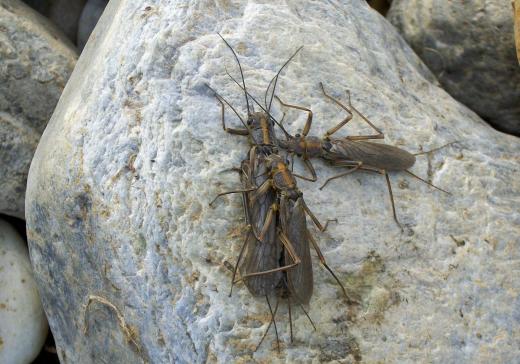By Chandra Ferrari
Theodore Roosevelt once said, “[d]o what you can, with what you have, where you are.” Many colorful quotes have been attributed to him but this is one of my favorites. It cautions against waiting for the perfect situation and moment to arise before moving forward. You could be waiting a long time.
That brings me to the Yuba River, one of California’s best trout and steelhead fisheries and home to a threatened spring run of Chinook salmon. Trout Unlimited has worked hard over the past ten years to secure benefits for salmon, steelhead, and wild trout in the Yuba.
The Yuba is not a “perfect situation” for coldwater fish restoration, by any means – it is an overworked river with multiple dams and demands on its water, and hatchery supplementation.
But we have done what we could with what we have in the Yuba, and that commitment has begun to pay off. Recently, we secured improved flows for 184 miles of habitat in the first phase of the hydropower relicensing process for the dozens of dams and reservoirs operated by PG&E and Nevada Irrigation District. When the new license is issued, those flows will improve fisheries and fishing throughout the Middle and South Yuba Rivers.
In addition, the Yuba Salmon Partnership Initiative (YSPI) today released a “Term Sheet” that will guide negotiations toward a binding settlement agreement that would return spring-run Chinook salmon, and possibly steelhead, to the North Yuba River above New Bullards Bar dam. You can read CDFW’s statement on this milestone here.
The YSPI is comprised of TU, California’s Department of Fish and Wildlife, the National Marine Fisheries Service, and the Yuba County Water Agency, plus American Rivers and the California Sportfishing Protection Alliance.
The YSPI settlement agreement would create a first-ever reintroduction program for salmon and steelhead above a rim dam in California and will include habitat enhancement actions in the lower Yuba River below Englebright Dam. The YSPI presents a promising opportunity to rebuild salmon and steelhead populations in the lower Yuba River and reconnect these species to over 30 miles of valuable habitat in the North Yuba River.
Many issues must be resolved before a full settlement agreement can be reached. However, the Term Sheet is a promising first step, and reflects an ambitious attempt to do what we can given the climate of today and the tools we have available.
California’s once abundant salmon and steelhead runs have experienced severe declines over the last century, mainly due to habitat loss and degradation. Much of the habitat that contains suitable water temperatures, particularly in summer, for steelhead and spring-run Chinook salmon is upstream of impassable dams.
Discussions in regulatory and collaborative venues in the Yuba have yet to produce a widely supported plan to get salmon and steelhead into the upper watershed. The YSPI Term Sheet released today presents an opportunity to develop that plan. It’s going to take a lot of work.
But now we have factors in place to accomplish it: a diverse group of willing partners, a water agency that will voluntarily commit itself to the program and has agreed to fund a large portion of it, valuable biological information that shows there is prime salmon and steelhead habitat in the North Yuba River, and regulatory agencies that are eager to use available tools to ensure the program meets the needs of third parties (including anglers and upstream landowners).
In particular, TU and the other YSPI participants are committed to ensuring that trout fishing is allowed to continue in the Yuba, provided anglers do not intentionally target listed fish.
YSPI is moving the discussion (and possibly the fish) in the right direction. It is doing what we can, with what we have, where we are. And, with continued dedication from the YSPI parties, it could provide a successful template for recovering California’s salmon and steelhead.
What’s next? That’s where you come in. We want to hear from anglers who know the Yuba River and want to learn more about the project, or to give us feedback on the YSPI effort. Contact Chandra Ferrari, TU’s California Water Project Director, at cferrari@tu.org.
Chandra Ferrari is California Water Program Director for Trout Unlimited. All photos courtesy Jon Baiocchi/Baiocchi's Troutfitters.










Comments
A supplemental statement from Chandra Ferrari:
"As noted in my blog, we are actively seeking feedback from anglers and those knowledgeable about the Yuba watershed regarding the direction of the YSPI.
"To reiterate, we do not have a final settlement agreement, not even close. We have a “Term Sheet” which sets the boundaries on what would be needed to reach an agreement.
"We think the Term Sheet is "good news" because it represents a strong opportunity to improve conditions for salmon and steelhead, as well as angling, above and below the dams on the Yuba; dams that will not come out in the near future.
"As it stands, nothing is set in stone for the Yuba River. Now, we want to hear from you -- comments, concerns, suggestions, information. Inquiring minds will have questions about the value, cost, and scope of the envisioned program. We encourage an honest dialogue in the angling community around these questions.
"TU expects to have satisfactory answers to these and other questions before we commits to a settlement agreement. For instance, we expect that the YSPI parties will establish robust biological goals and objectives and an adaptive management program through which we can conclude that good biological outcomes for salmon and steelhead will be achieved.
"We also expect that the settlement agreement will include assurances to protect the needs and values of anglers in the short and long-terms. Additionally, we expect that an equitable financing plan will be developed that ensures proper entities are contributing to the effort in adequate amounts.
"In short, before we commit to a settlement agreement for the Yuba we will need to be confident that the program will produce good biological outcomes for salmon and steelhead and that it best represents what we can accomplish today in the current climate."